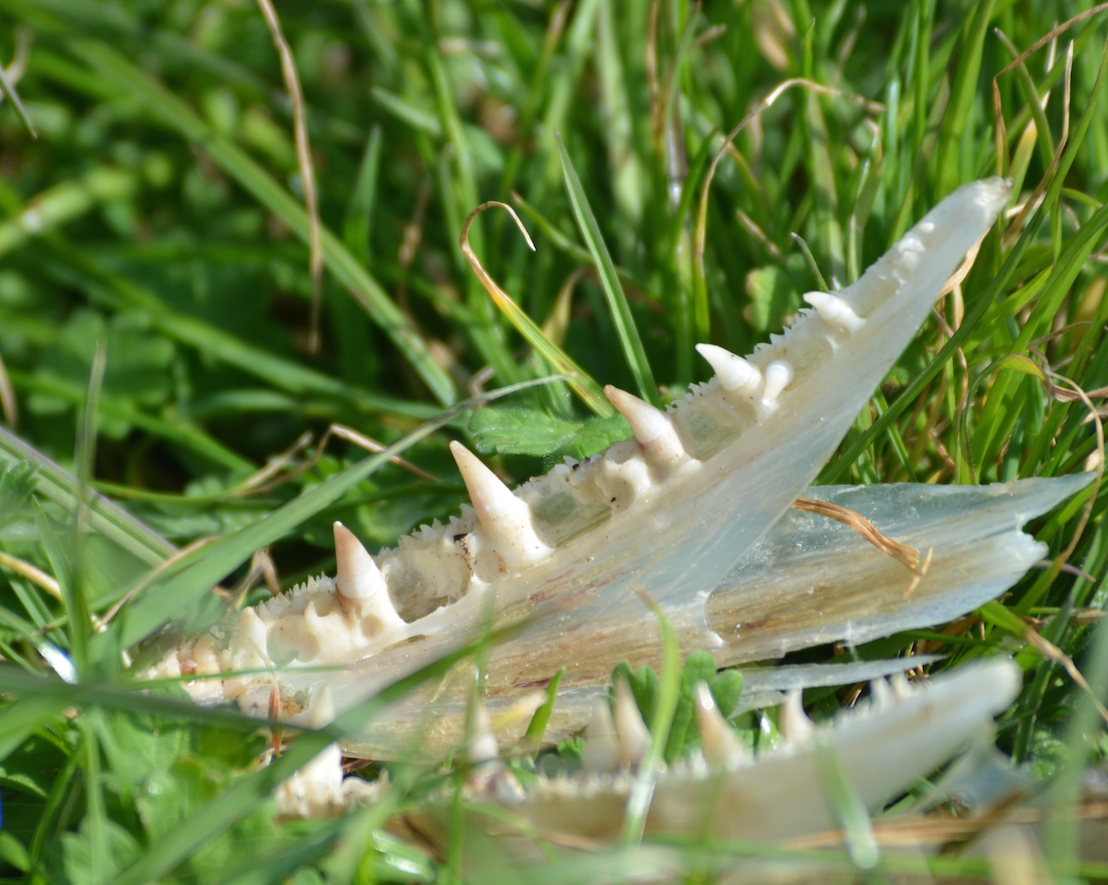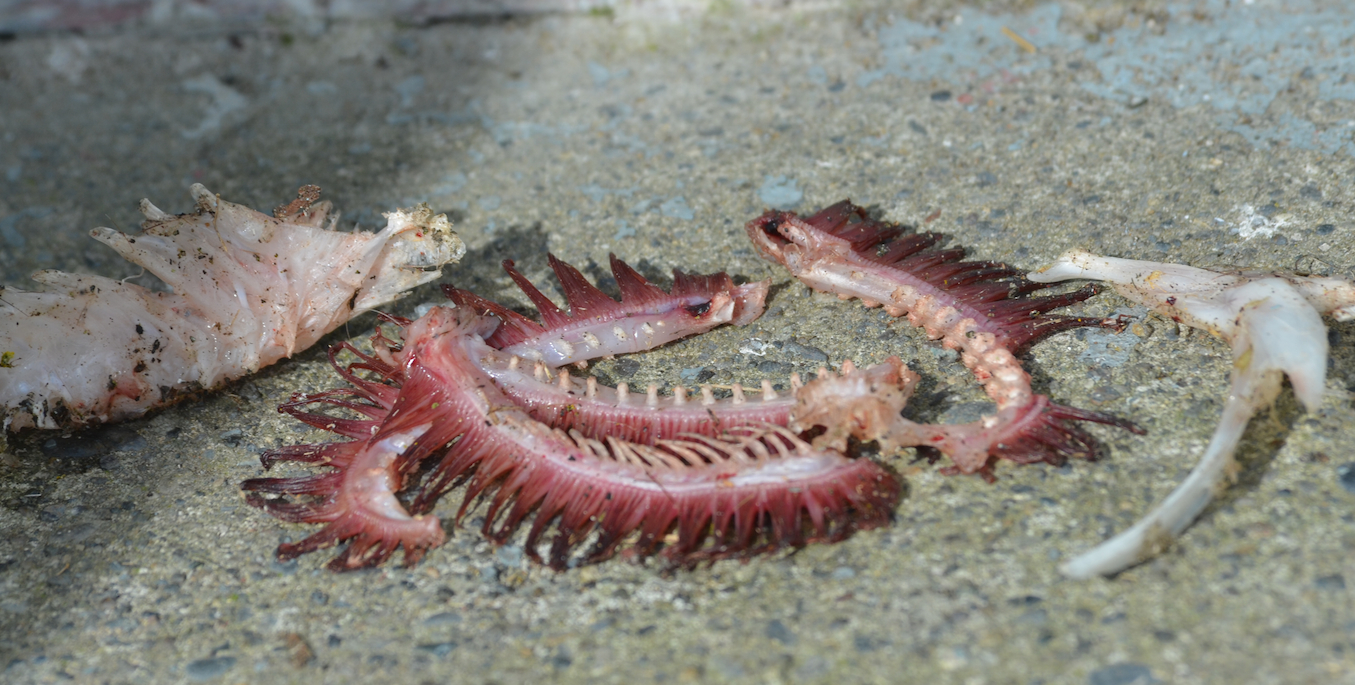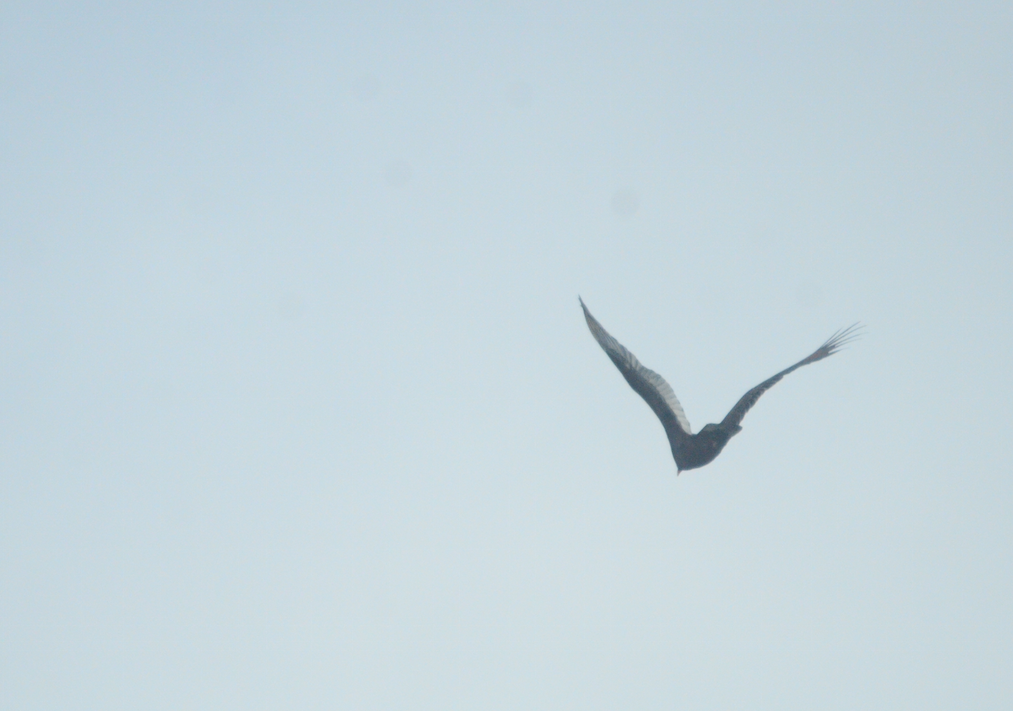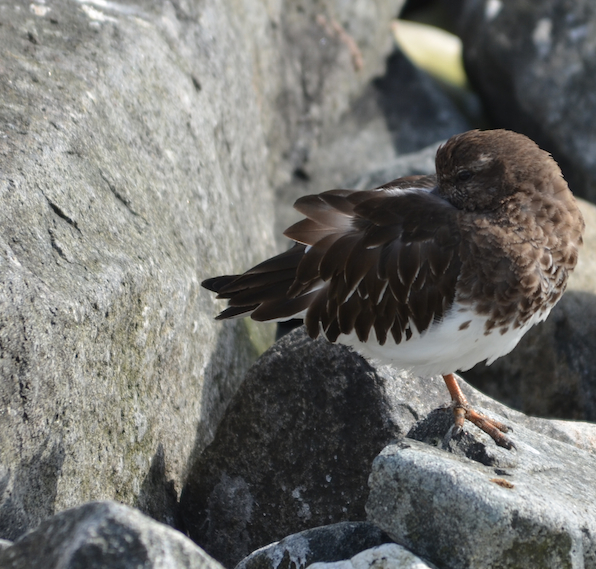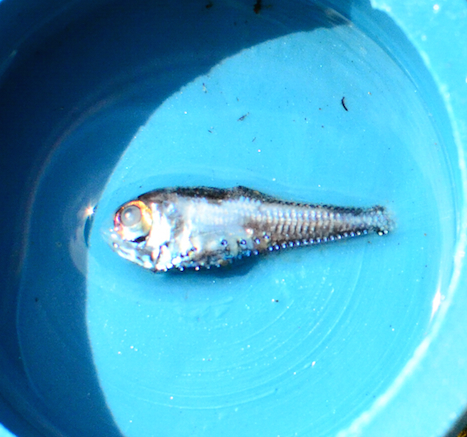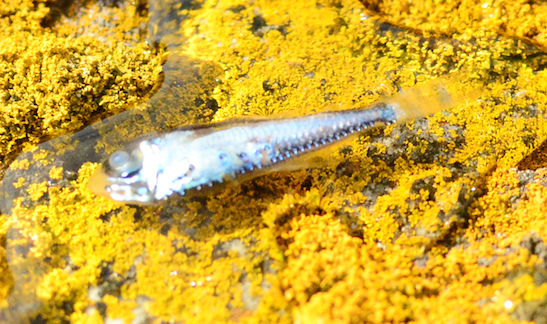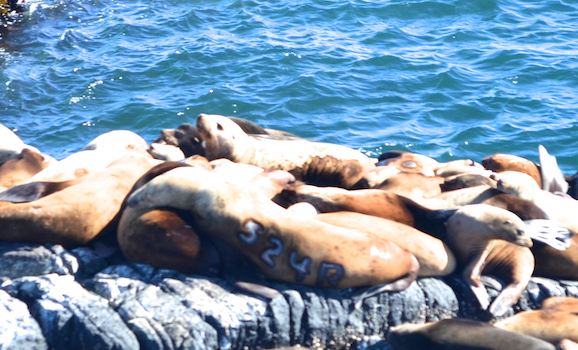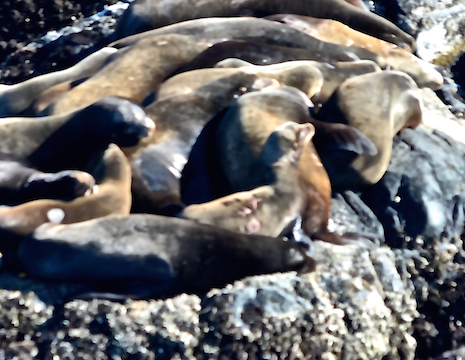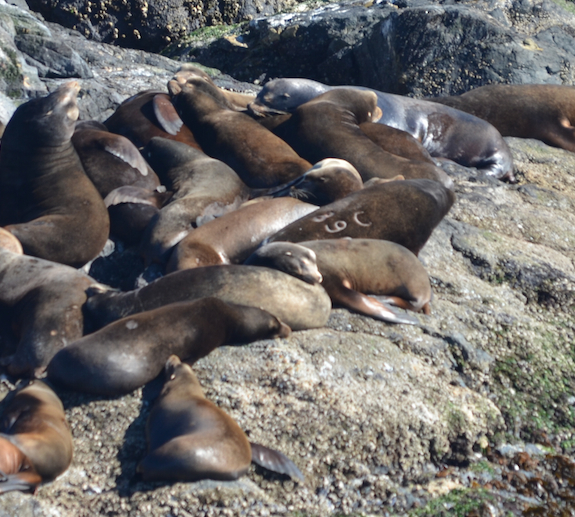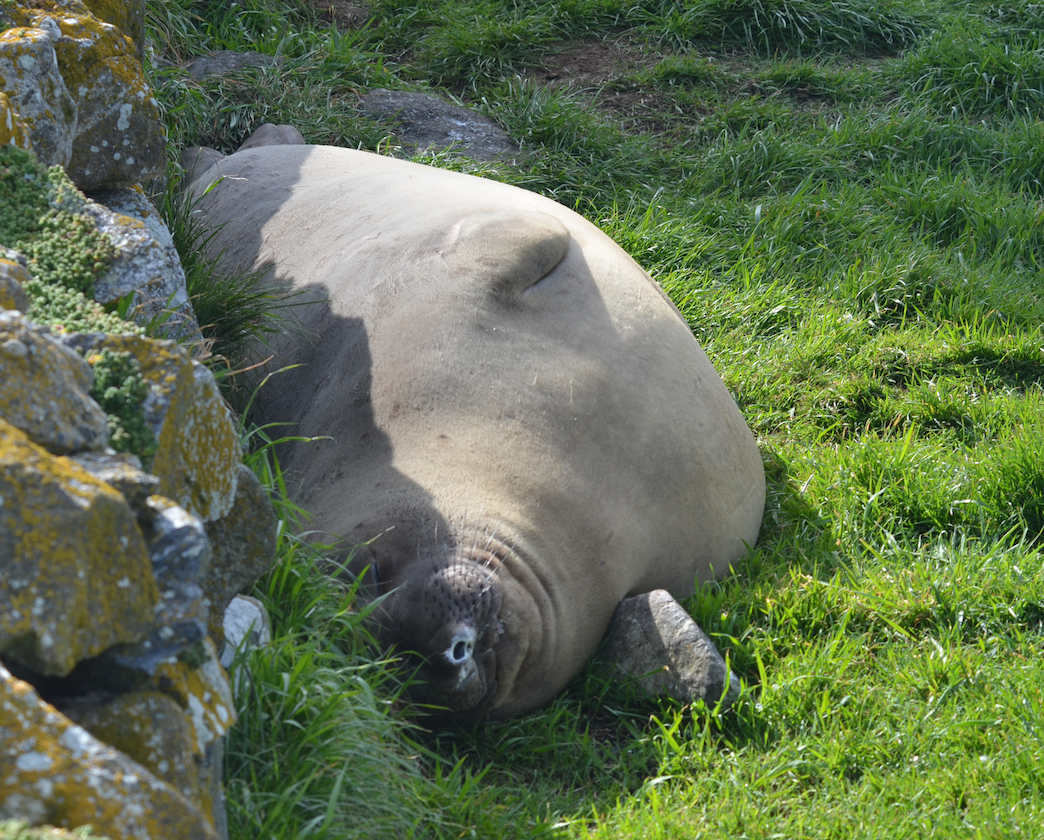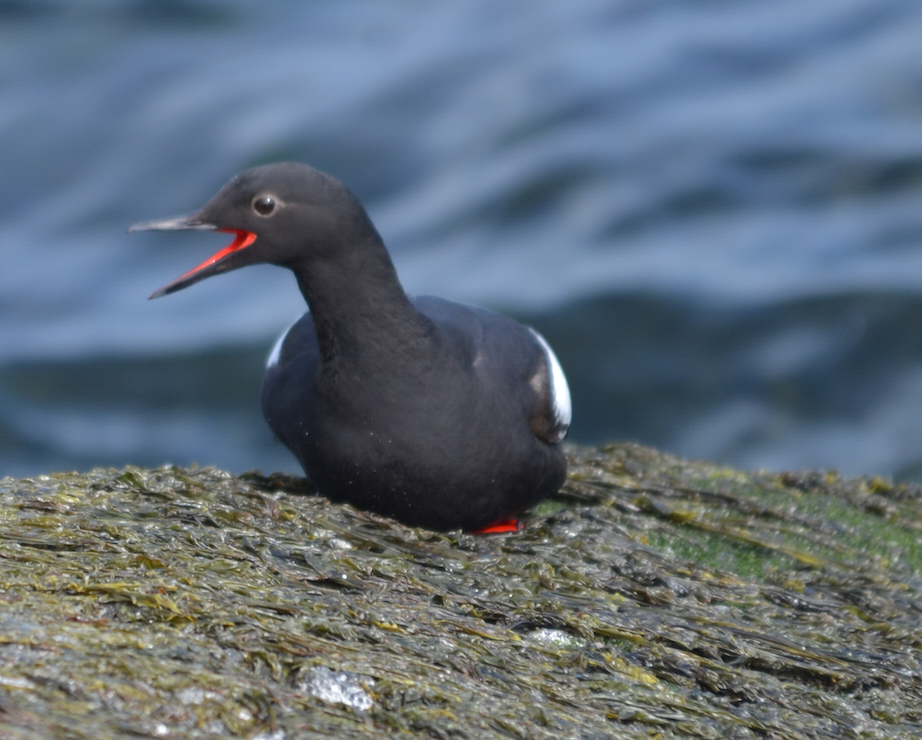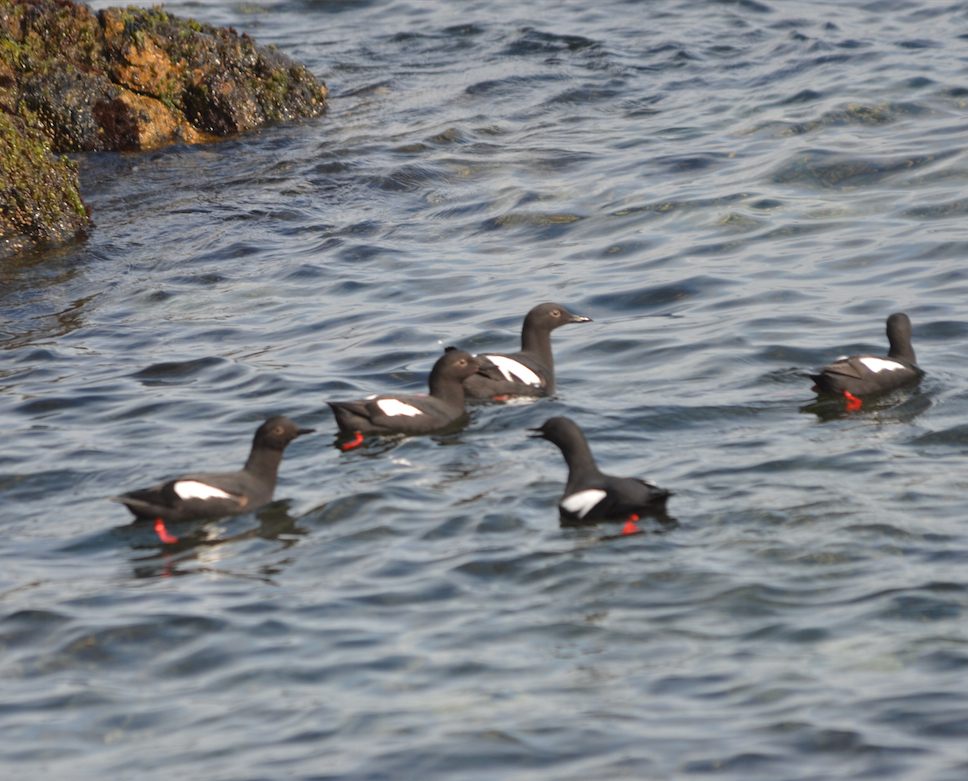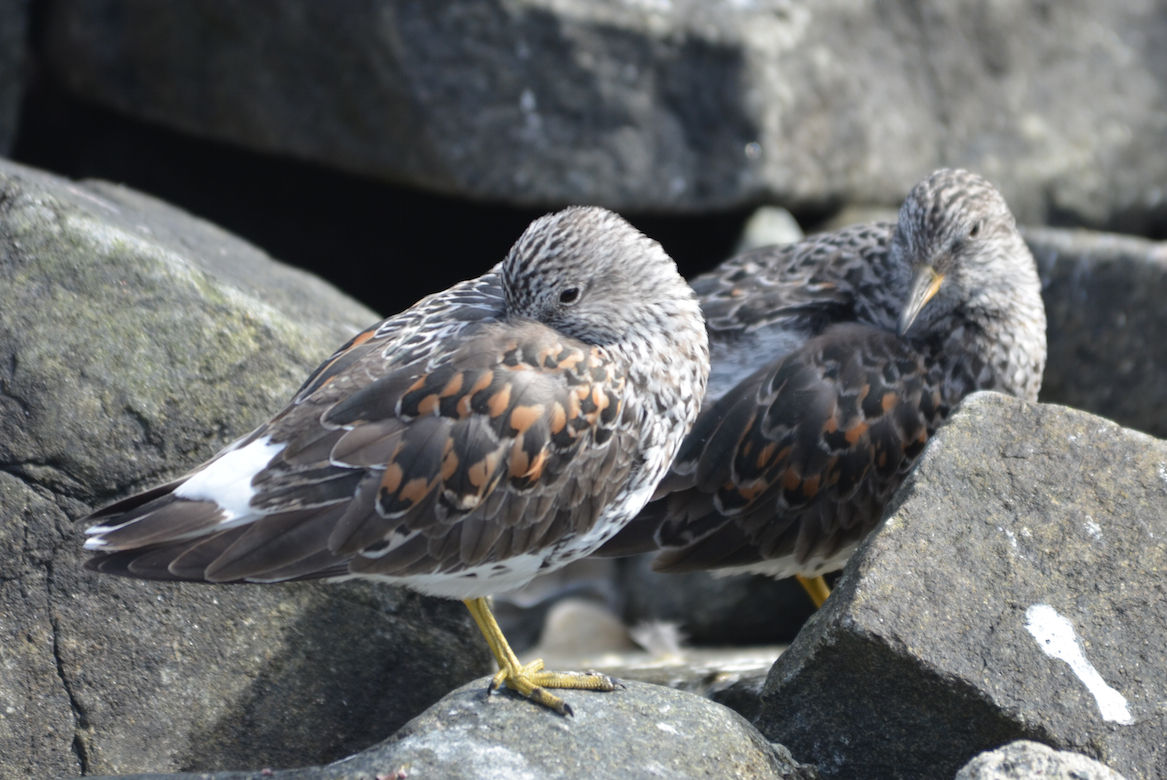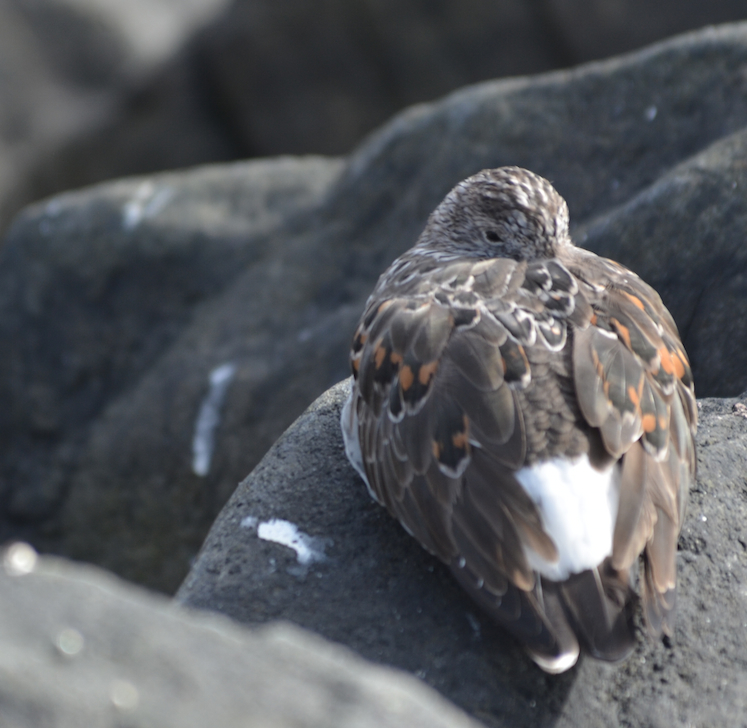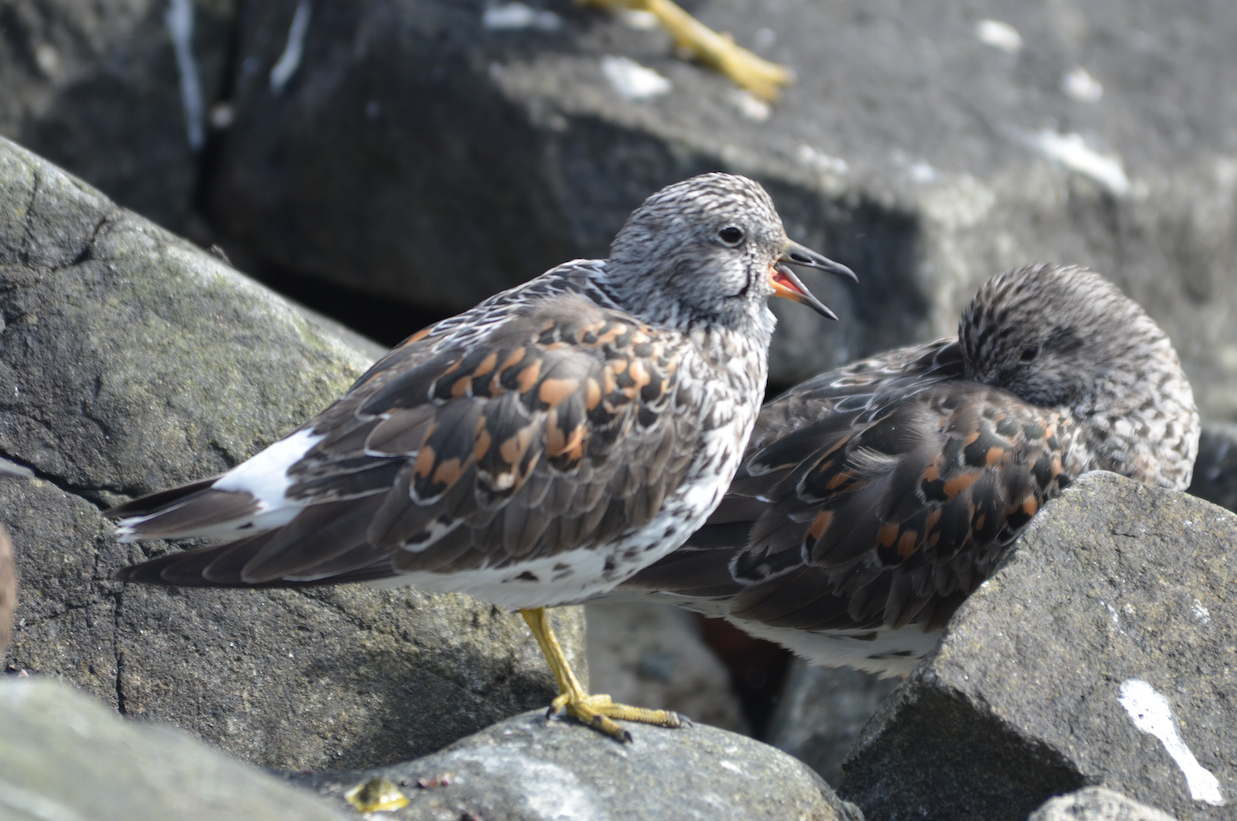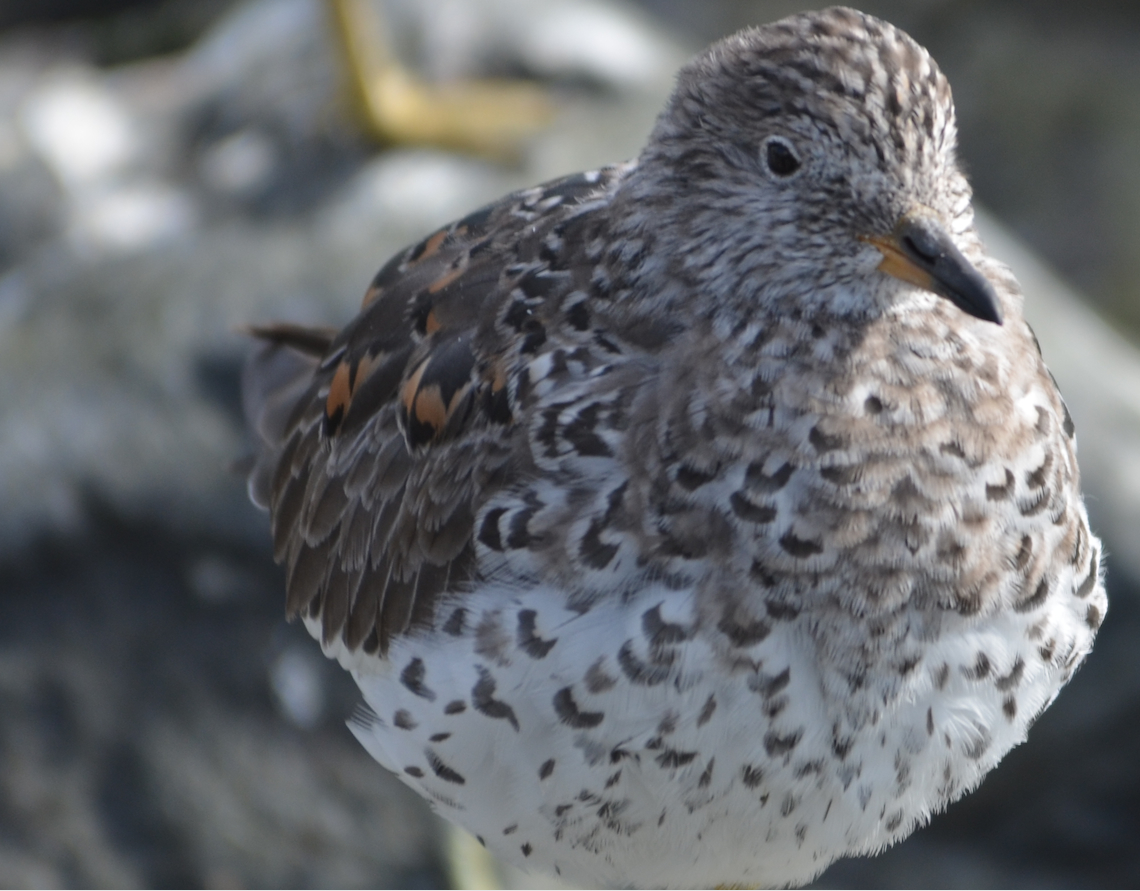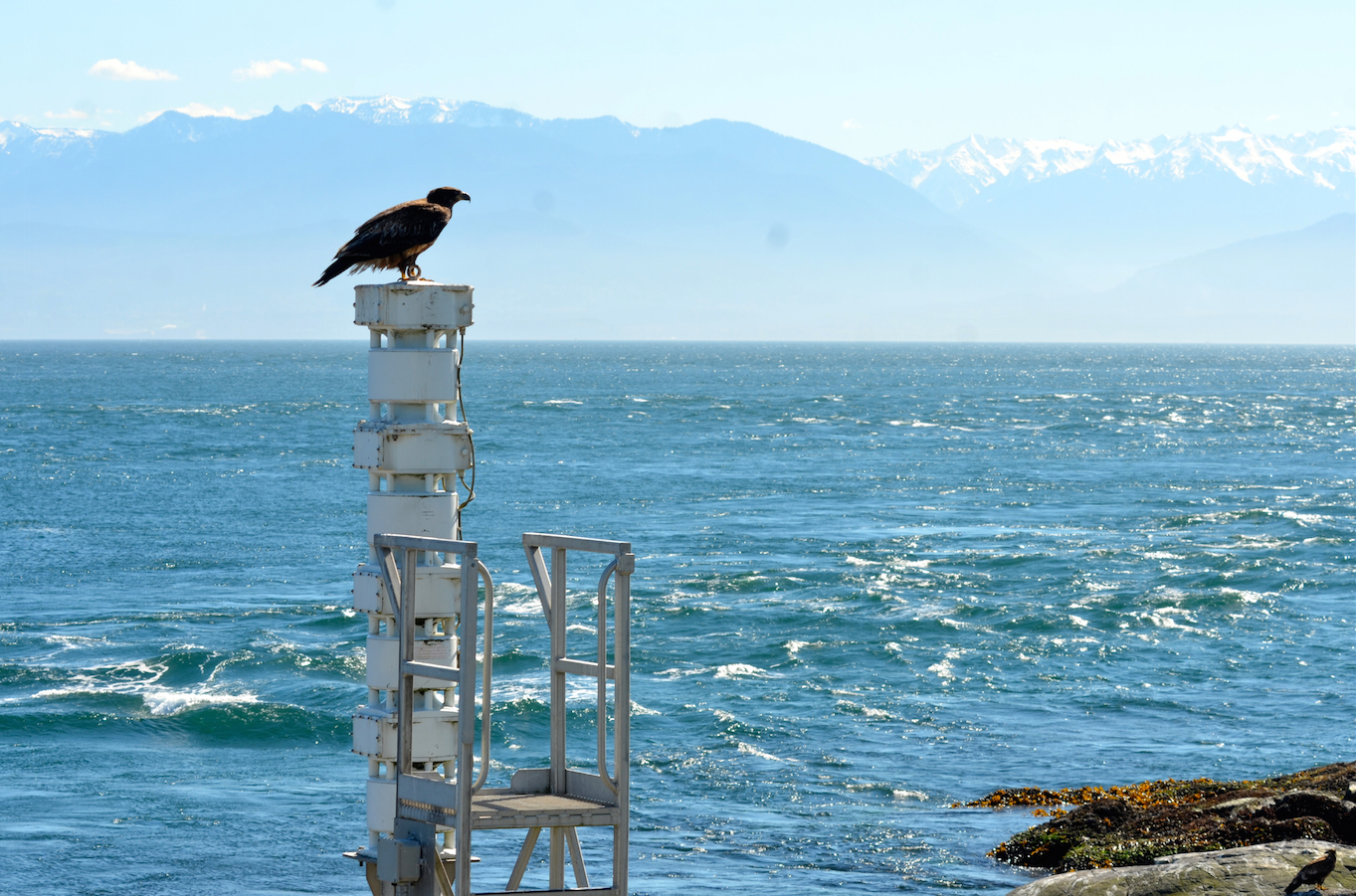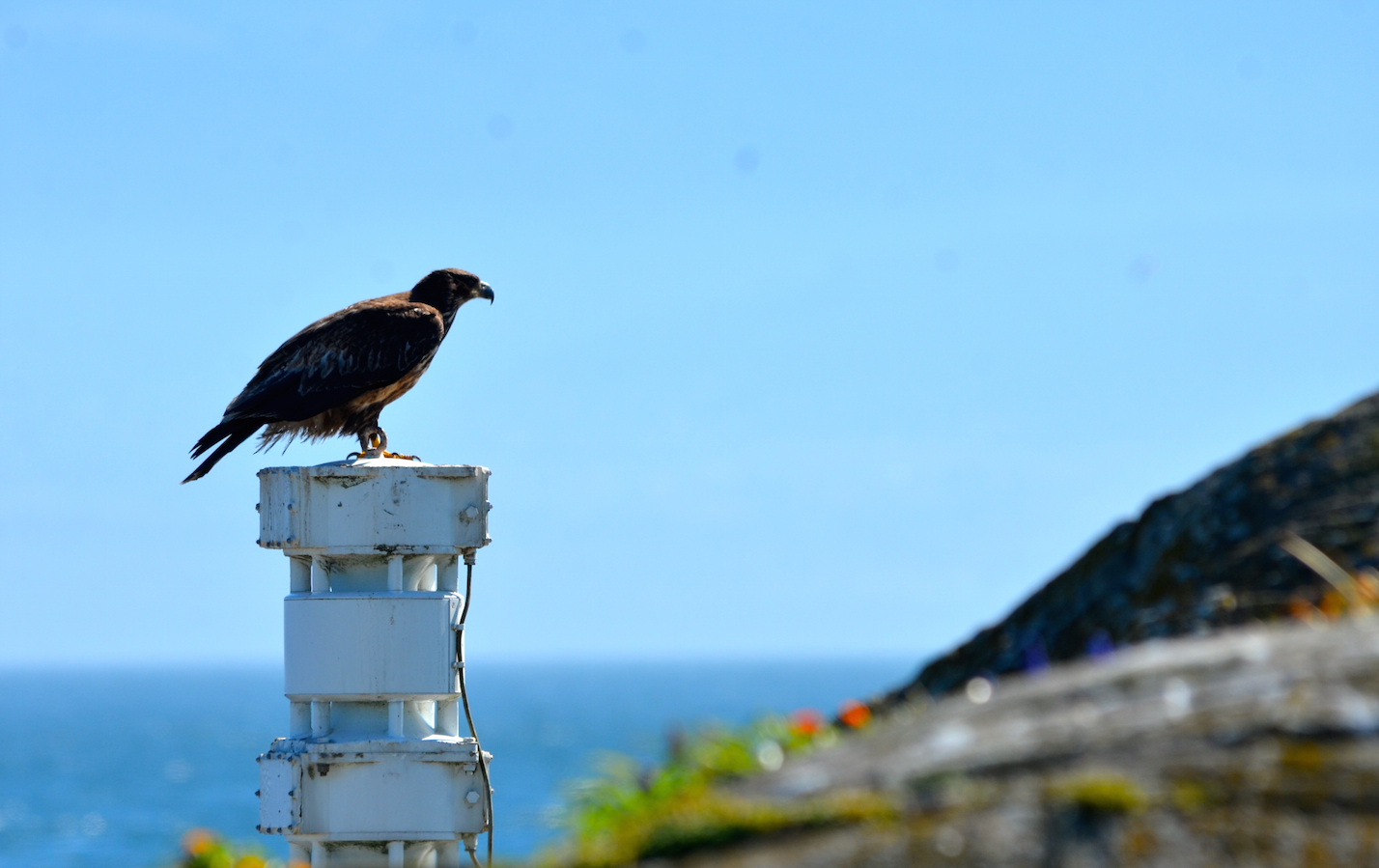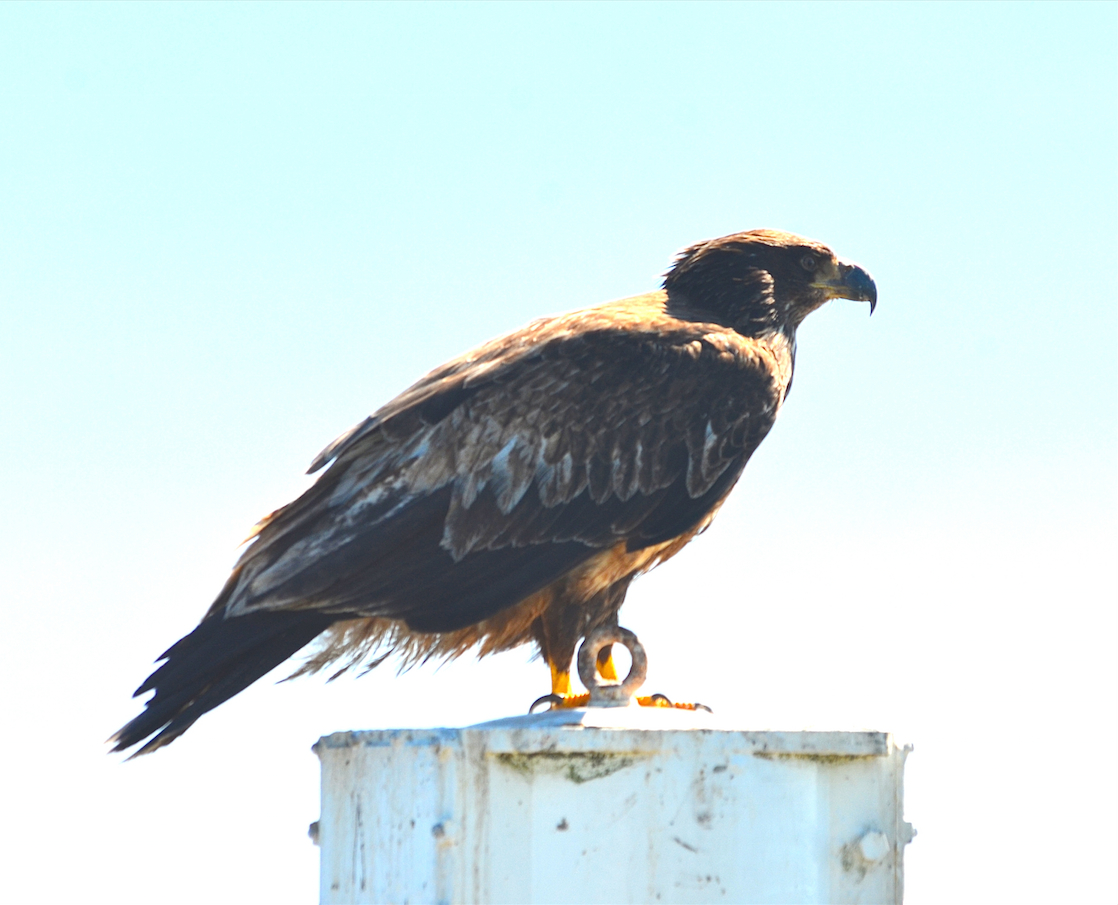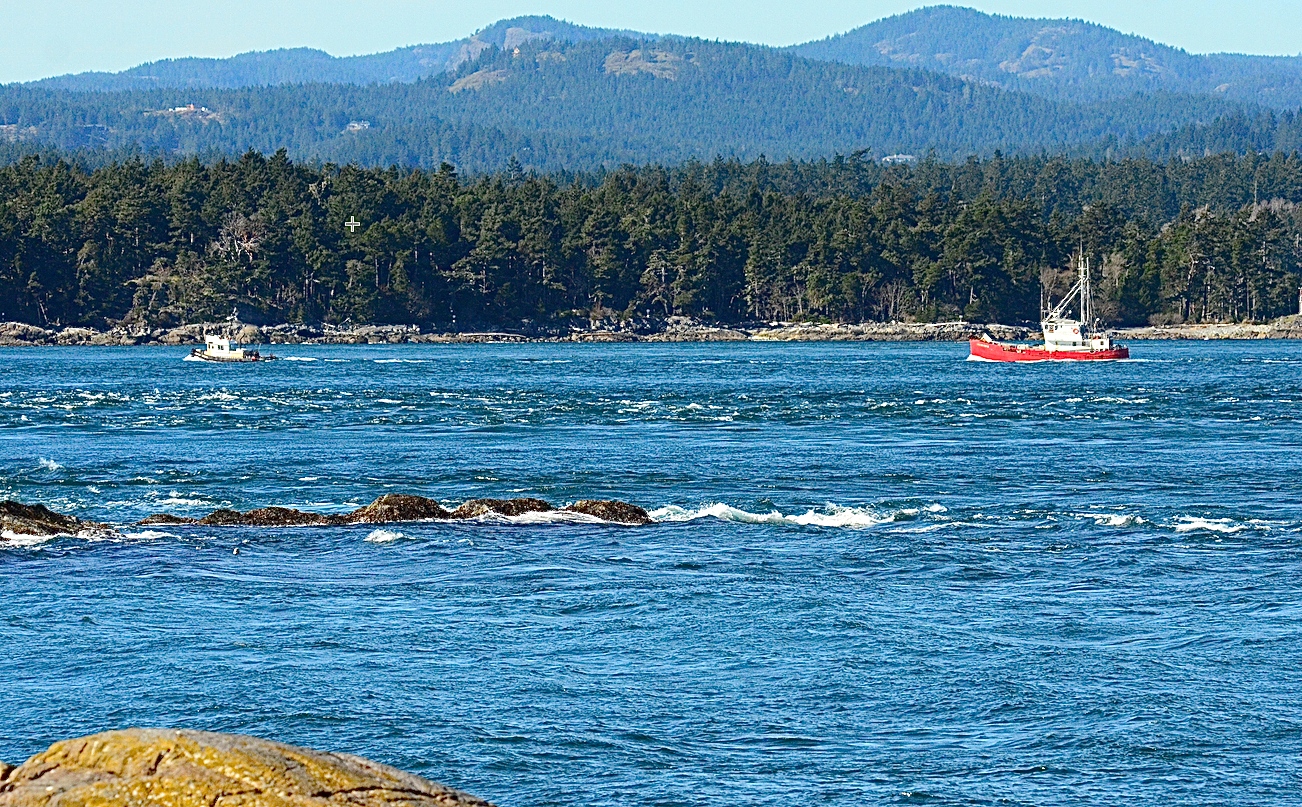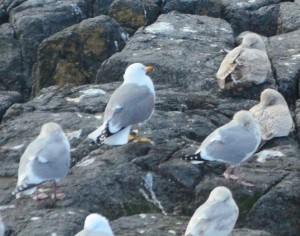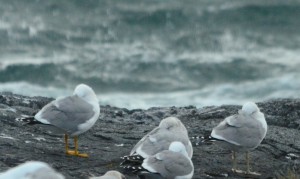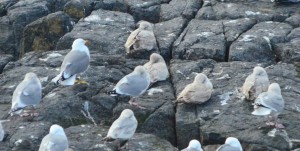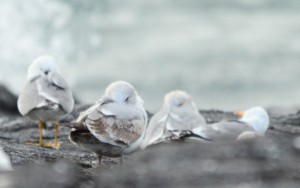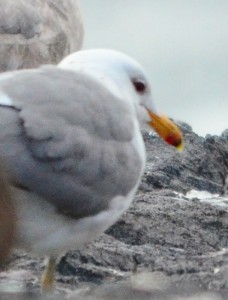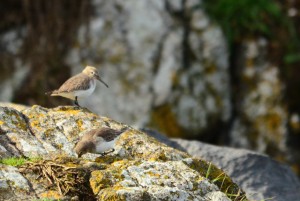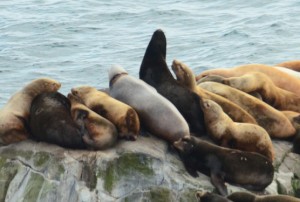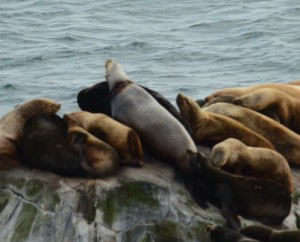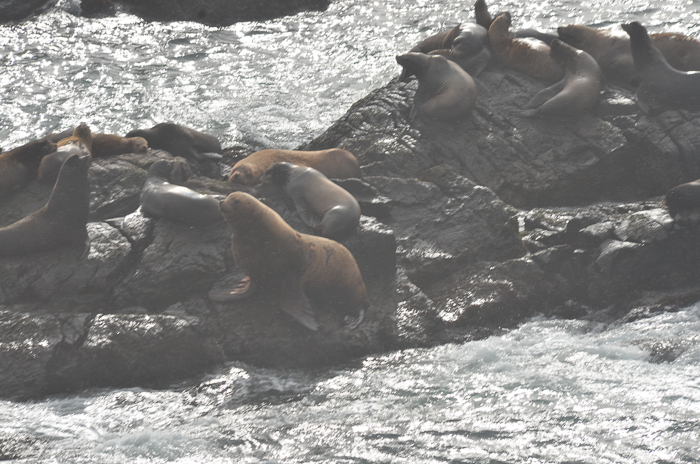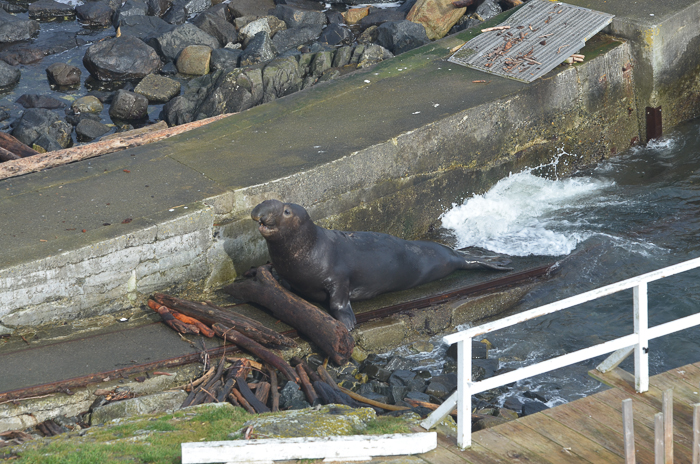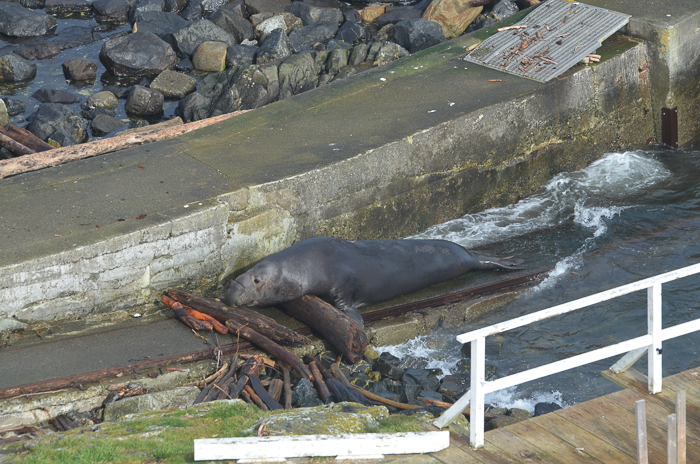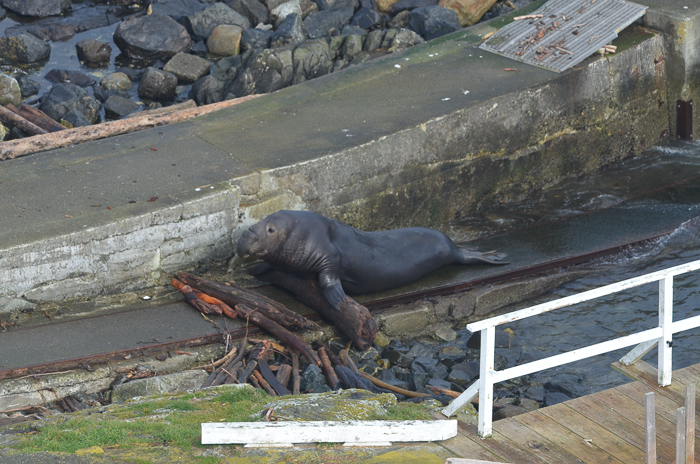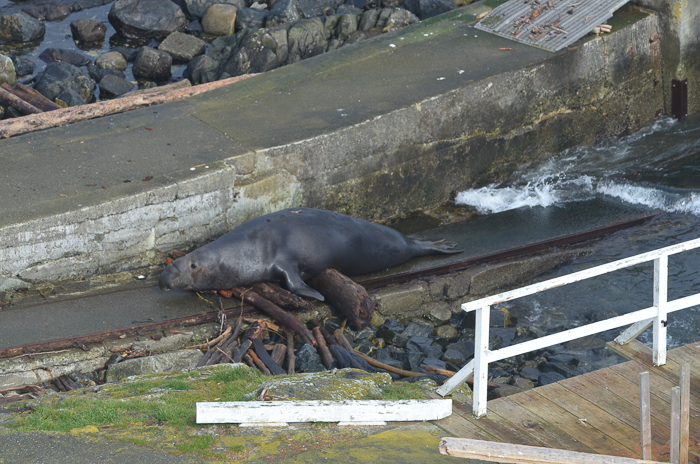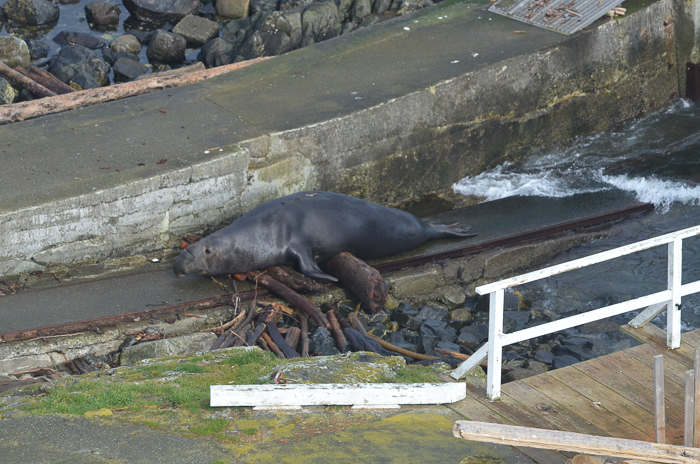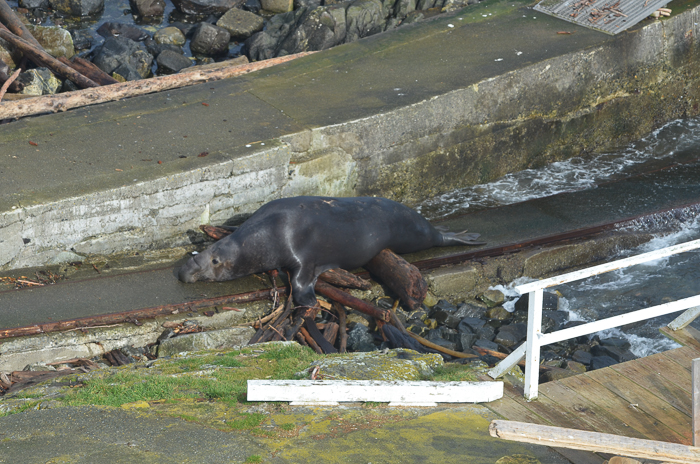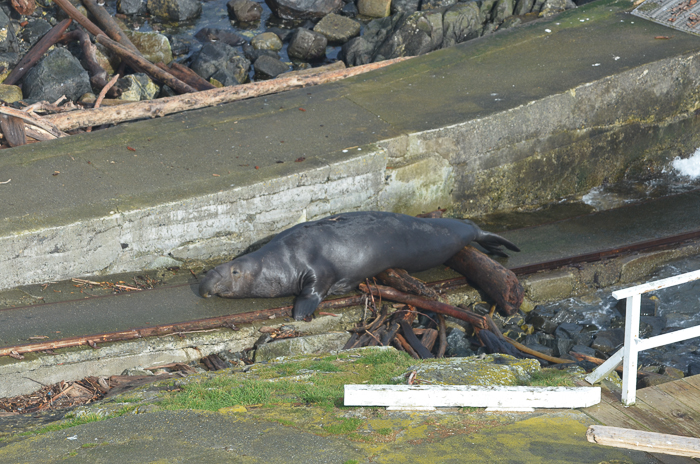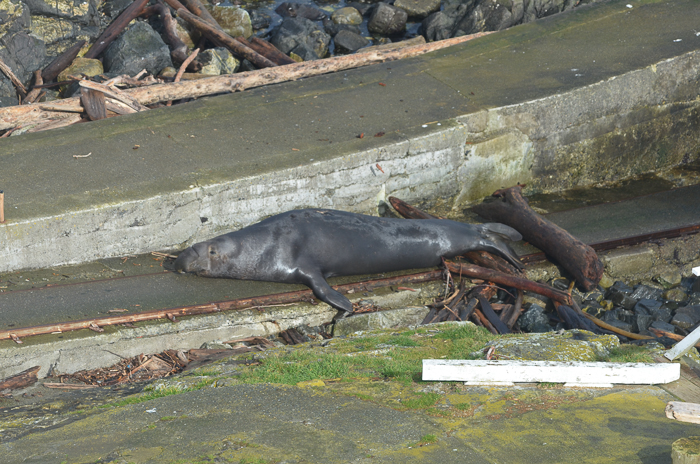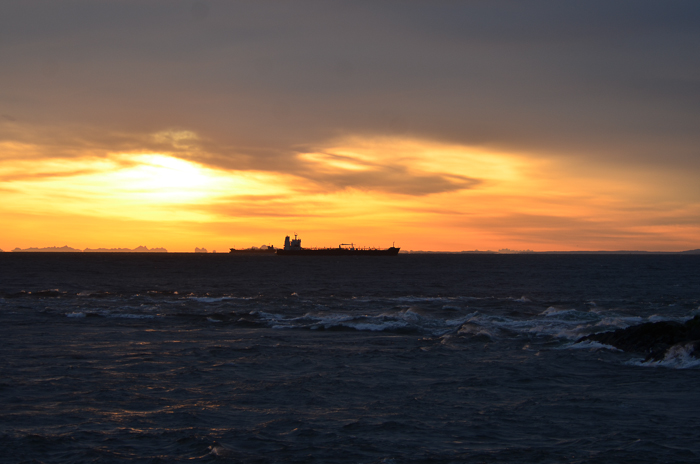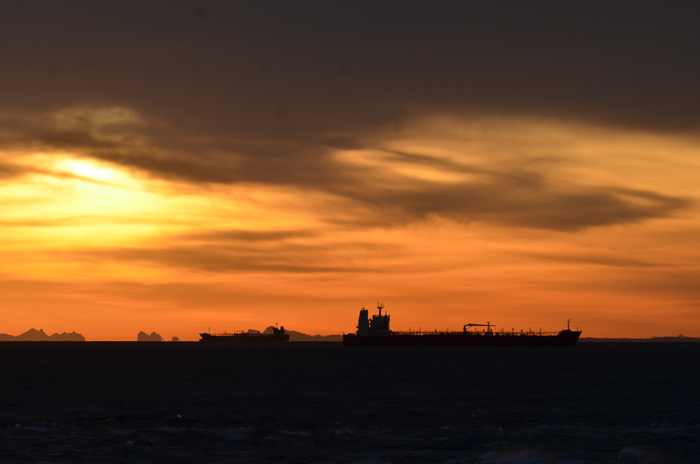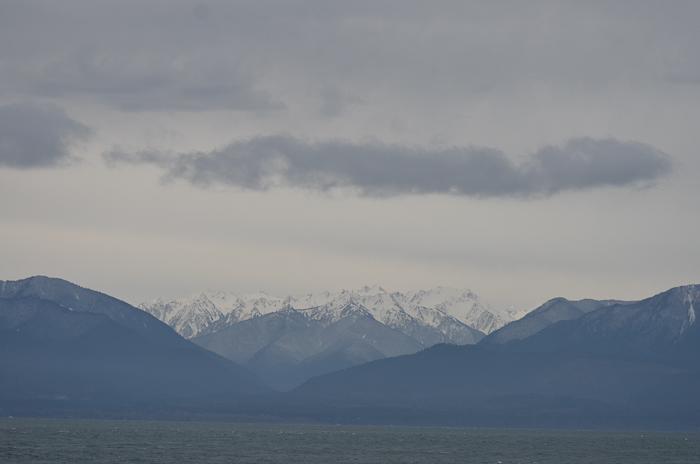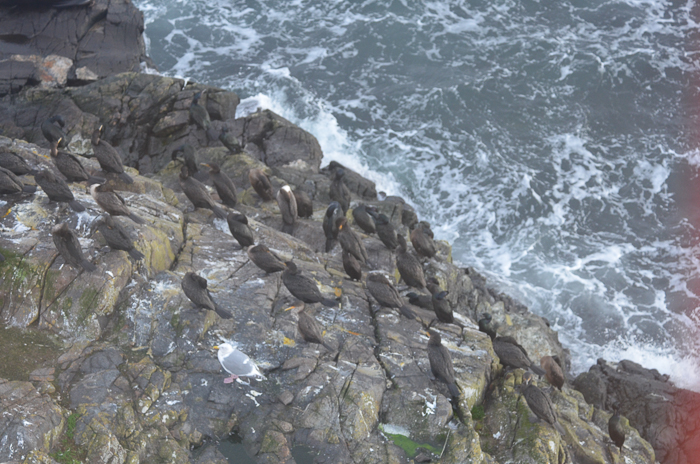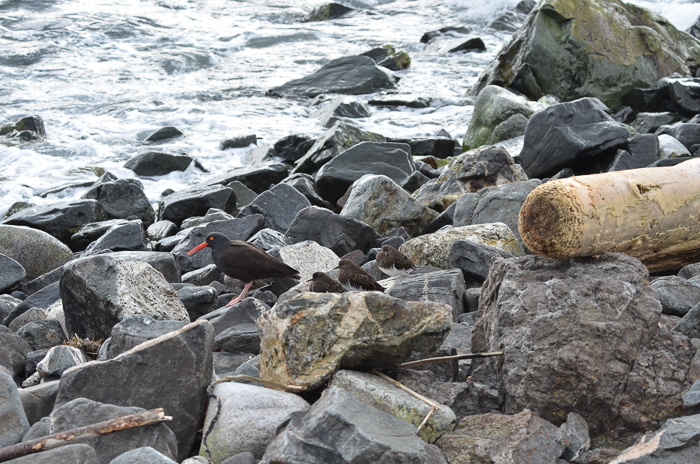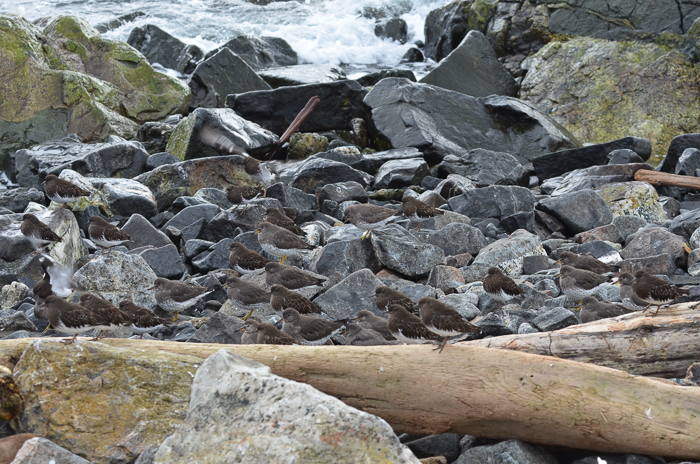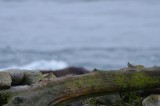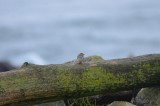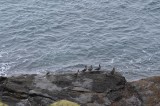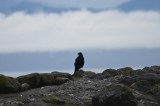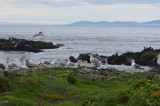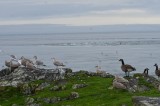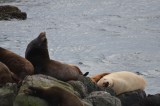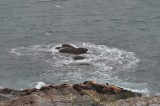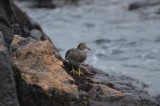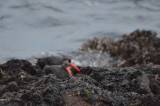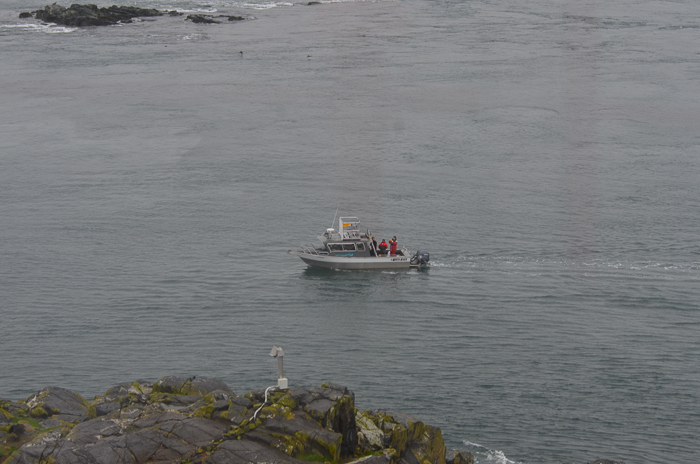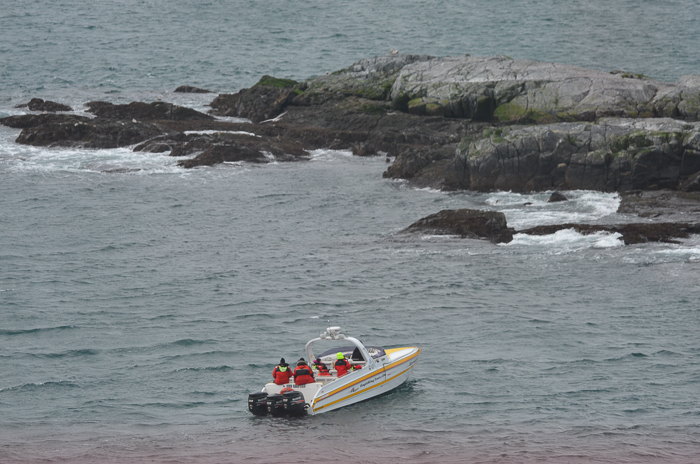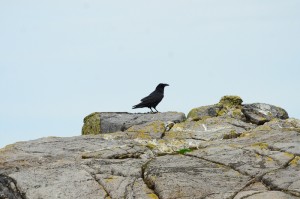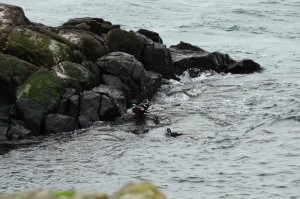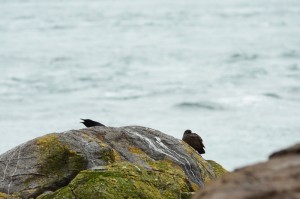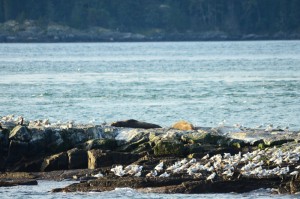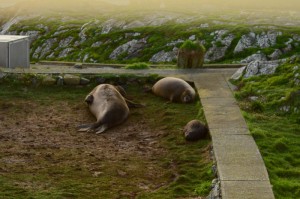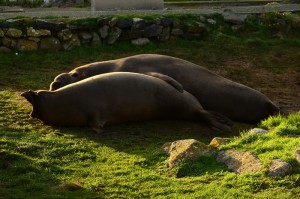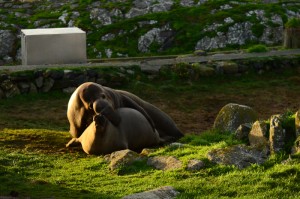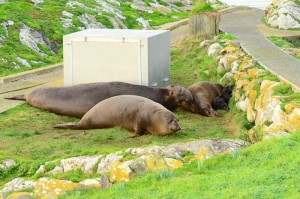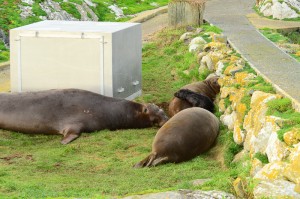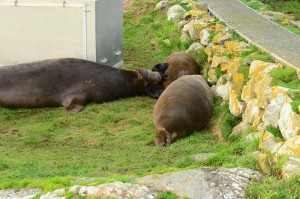Weather & Sea Conditions
At dawn, the west wind was already blowing 30 knots and gusting. Although it dropped to 20 – 25 knots at times, the west wind continued to bring dramatic clouds and showers along with brief glimpses of sunshine and rainbows, throughout the day. The marine forecasters call for the wind to back to southwest and they estimate that the SW wind will diminish to 10 -15 knots, late overnight and drop to light, early Tuesday morning. Showers and the mix of sun and cloud are predicted to continue. Seas were rough today to the west and out in the Strait, while the entrance to Pedder Bay and the eastern horizon remained a little calmer in the lee.
Vessels
No vessels were observed in the protected area or passing nearby, today.
Ecological and General Observations
Canada Geese are more and more insistent that they belong on Great Race and two pairs are actively nesting now. Even if the eco-guardian were to spend 24/7 chasing off geese, it would be ineffective as they are incredibly persistent, very strong and have a certain goose cunning that harkens back beyond the etymology of ‘wild goose chase’. Without the large numbers of geese that were present last year and the crushing effects of dozens elephant seal dozers, the grass does appear to remain a little longer, but then it has been a wet spring.
Beulah, the large female Norther Elephant Seal staying in the garden, went for a dip this morning and on her return she seemed to enjoy ‘frolicking’ in the long grass, head down undulating through the greenery. She also found a clean place to sleep, next to an old, lighthouse heritage, rockery bed. After watching the elephant seals purposefully destroy the tulips last year, I picked a bouquet when she moved into that part of the garden and they are brightening my world on the little desk in the house.
More and more adult male California Sea Lions are hauling out on Great Race, This afternoon there were ~50 on the south side and a dozen more on the west side. Younger animals and Steller’s continue to haul on South Rocks. Yesterday evening, I discovered a new (to me) den for the old, male River Otter. I knew that there was an otter spot nearby due to the telltale ‘calling cards’ left outside the den area but it took a while to find it. He is barely visible and very protected, sleeping under one of the big boulders just northeast of the compost.
The Bald Eagles continue to spend the day in the Ecological Reserve; most active early and late, chasing gulls. There is a lot of evidence of piscivory on the island, but some of the remnants are hard to pin on any particular predator. The gulls here eat a lot of small forage fish like herring and marine invertebrates like chitons but there are also remains that look more like either River Otter or Bald Eagle leftovers (see images).
A Turkey Vulture stopped and rested near camera 5 today. I was hooked up to a staff meeting by conference call or I would have gone outside to photograph it. I did get a photo through the window, before it was swept away by the west wind. Black Turnstones continue to be present in high numbers, resting and fattening up before their northward migration.
Chores & Visitors
Chores today were routine and there were no visitors.
Conservation Message
If you are a commercial boater or if you use docks and harbours, you may be interested in two really excellent booklets on Green Boating and Displacement Hull Fuel Efficiency put together by the T. Buck Suzuki Environmental Foundation. Their Green Boating Guide covers good marine practices in seven main areas: wildlife protection, habitat protection, waste discharge, fluid handling, solid waste, fuel efficiency, and cleaners. The Fuel Efficiency Guide covers ways to reduce fuel consumption through both operational and design measures. Another way to look at savings on fuel is that it also reduces carbon dioxide pollution to the atmosphere. CO2 is not only a greenhouse gas, ~ 40% of it ends up in the ocean causing the shift in basic chemistry which is called ocean acidification, global warming’s evil twin.
There is a real shift in attitude happening amongst boaters of all types, as more and more people realize that we have to profoundly change our basic routines and behaviours in order to have a sustainable ‘blue’ future. I call it investing in green and keeping it clean for a blue economy. If you use social media please use the hashtag #green4blue to connect with other people going green for a blue future. Check out the booklets here for great ideas on how you can make a positive difference on the water.
http://www.bucksuzuki.org/images/uploads/docs/GBGweb2012.pdf
http://www.bucksuzuki.org/images/uploads/docs/FEGweb2012.pdf
Aussi disponible en français http://www.bucksuzuki.org/publications/
- This fish jaw looks like it belonged to a formidable predator itself.
- These remains were left right outside the energy building door. Gills, rakers, a back bone and opercula were all that was left.
- Above photo of a Turkey Vulture taken through the kitchen window. Right – a sleeping Black Turnstone.
.

